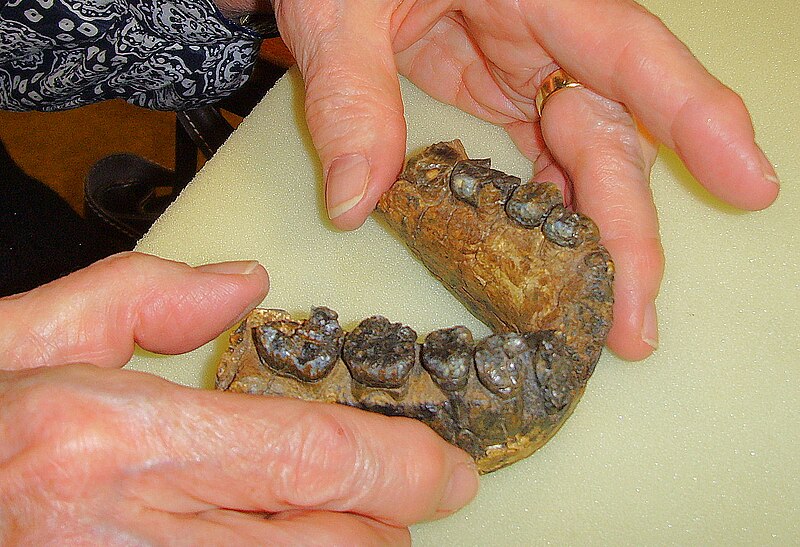This is a really big deal, guys. This is a specimen that's been argued about for decades. Now, they've found other members of its species!
 |
| 1470 (left) and 1813 (right) |
Anyhow, I demonstrated that even the most sexually dimorphic ape species didn't come close to what we'd need to assume about 1470 and 1813 to get them to belong to the same species. However, my study was just a measly undergraduate project and didn't garner any attention other than an impressed eyebrow-raise from my esteemed professor (you have no idea how much I geeked out about that eyebrow raise).
The point of sharing this story is that I HAVE BEEN WAITING A LONG TIME FOR SOMEONE TO PROVE FOR REAL THAT 1470 IS NOT HOMO HABILIS.
And the only way to truly prove that was to find more fossils. That's what has finally happened. A whole slew of new fossils have been discovered. Holy cow. They match 1470 perfectly and show that it's significantly different from other specimens (compared to others, 1470 and these new fossils have a different shaped jaw with canine teeth facing the front and a flat face).
These fossils come from Koobi Fora, a site of fossil beds on the banks of Lake Turkana in Eastern Africa. This is the same place 1470 was found, and is also where specimens of Homo habilis and Homo erectus have been found. It seems likely that at least three species of early humans lived in the same place at the same time.
That's awesome.
Each was just different enough that they probably occupied different environmental niches in the same location, like modern primates do so often today. But it begs the questions...what did they think of each other? Did they interact at all?
These were early versions of us. While they didn't have complex tools or real language (we don't think), they still were smarter than anything else around them and were likely self-aware. What was that like for them? Hanging with other species of, essentially, themselves?
This is why I love paleontology. It's arguably the most imaginative of all the science fields.
Now, please excuse me while I go back to daydreaming what it would've been like to hang with all our early ancestors 2 million years ago...and congratulate 1470 in person on finally being recognized as its own species and not just a freaky version of Homo habilis.


No comments:
Post a Comment